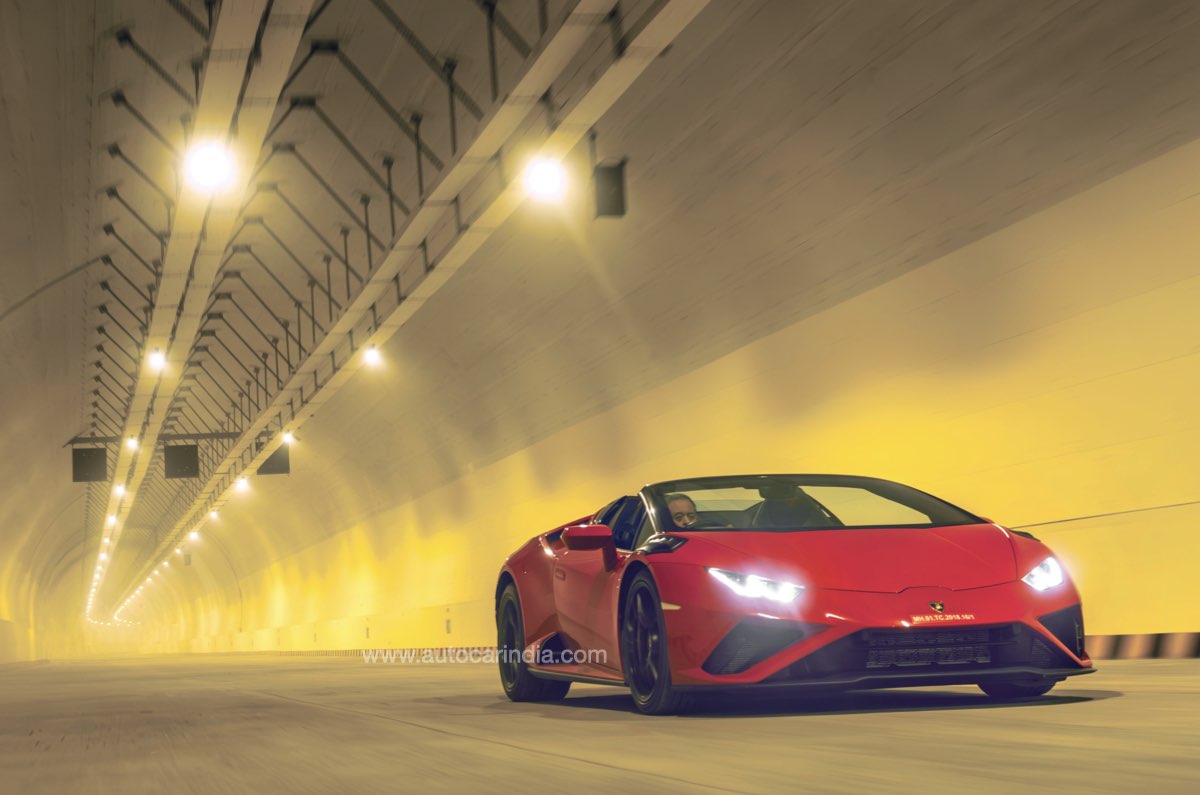
Slow recce done, I drive back gingerly and take a U-turn. This then is ‘lap’ two of the yet to be opened tunnel. I know the flow of corners, and I know where the construction equipment is tucked away, so this should be fun.
Ahead of me on the down ramp, approximately three and a half kilometres of tunnel that stretches from Priyadarshini Park at Napean Sea Road all the way to Marine drive in the centre of Mumbai. On a day with bad traffic, you could easily save upwards of twenty minutes. Today, with no one inside the tunnel, it’s anybody’s guess.
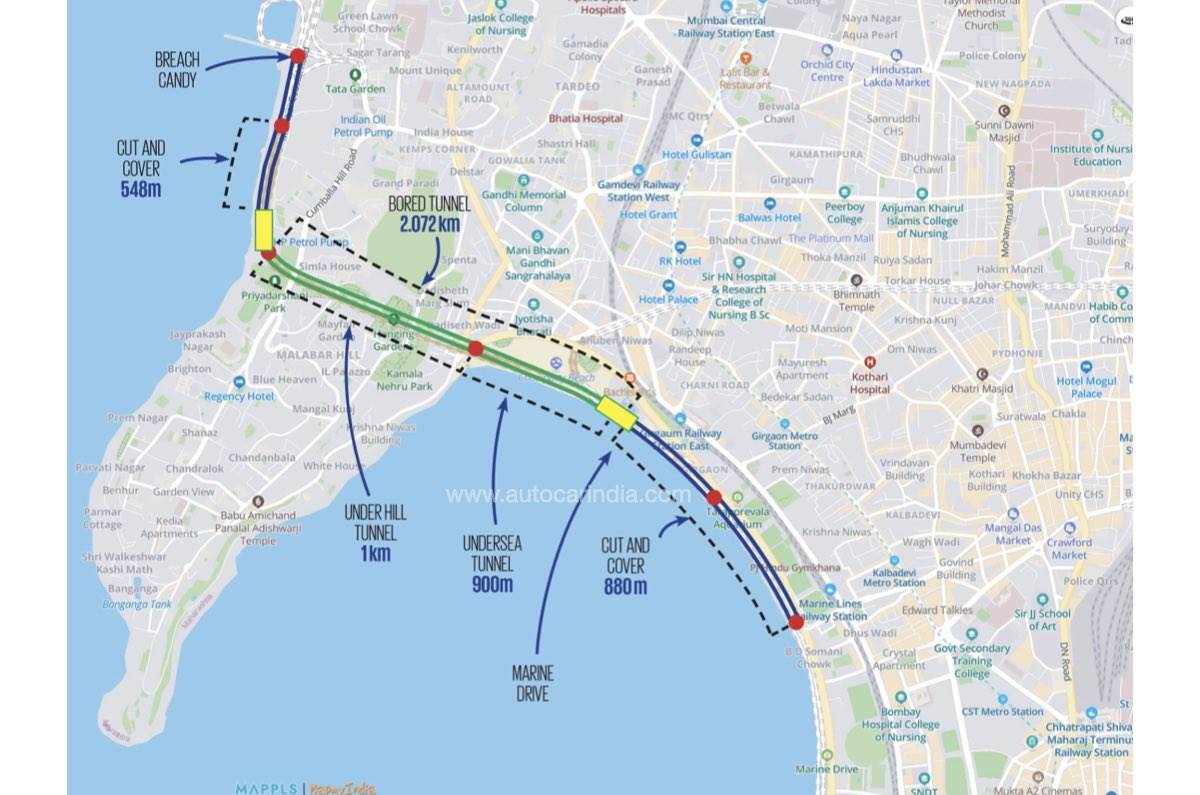
To show just how good the tunnel is, we have the perfect car for the job – the Lamborghini Huracan Evo Spyder. It gets a howling naturally aspirated V10 and a demonic exhaust note, but the best bit is that the roof comes off. Time to rattle my eardrums.
As I set off in the direction of Marine Drive, with Napean Sea road behind me, the road starts diving down. This is plain to see initially, with the sea to my right and the surrounding infrastructure for reference. Once I descend a few 100 metres into the tunnel, however, all references disappear, and then I can’t really tell how steeply I’m descending.

The tunnel then starts turning left. And keeps turning. What follows is a long, tightening 90 degree corner with an interesting bank angle. Since the construction equipment has thinned out, I select Sport on the steering wheel, and this immediately bumps up the volume of the exhaust. Wowie! The piercing howl is just mad. No time to enjoy the exhaust now as I start adding more and more power. Despite the dusty conditions, the low-slung Huracan has so much grip and poise, it comfortably hooks around the corner; the super weight distribution and the massive rubber providing loads and loads of grip. I do get a bit of a wiggle as I put my foot down on the exit, but that only adds to the excitement and the drama. One thing’s for sure, this long left is a difficult corner; so give it some respect.
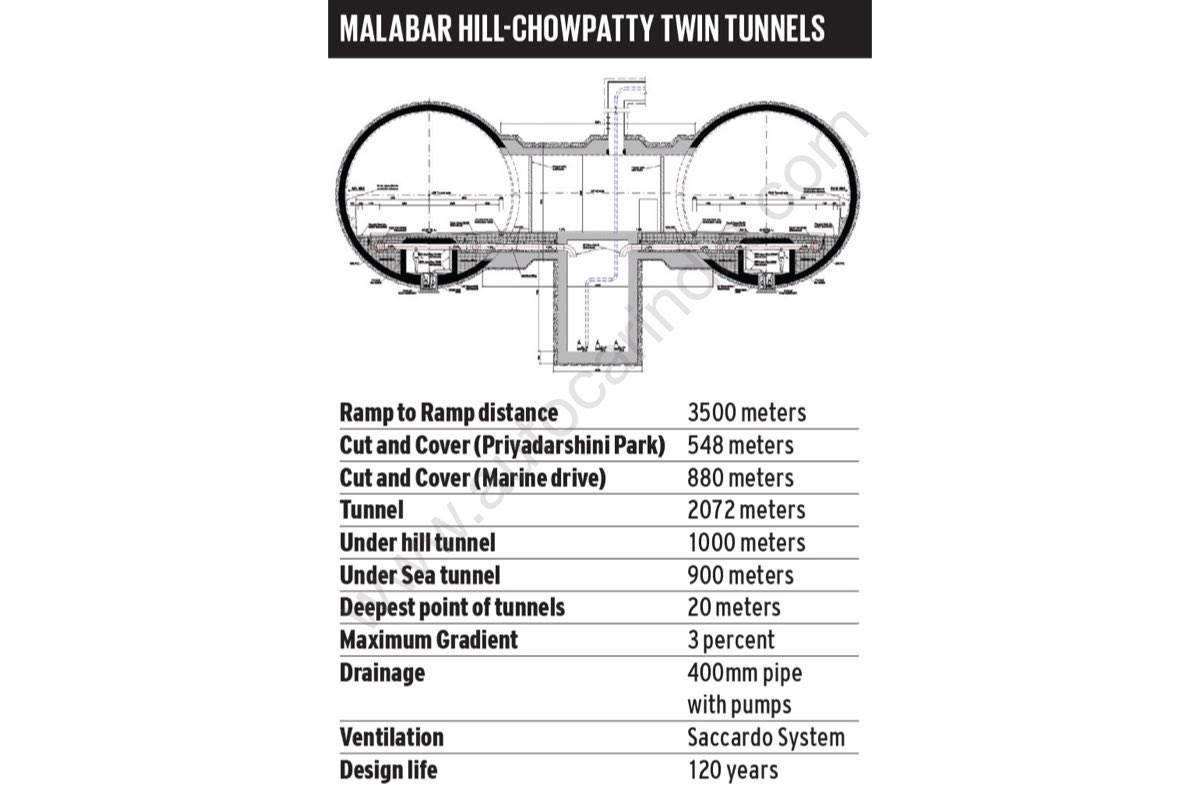
India’s first undersea tunnels also pass directly under some of the country’s most expensive real estate. This is something I’m acutely aware of as we rocket along; there’s no way you could have built an elevated road or cut a path straight through here without massive disruption and delay.
All thoughts of real estate prices soon dissolve. Even though I put my foot down progressively on the organ pedal like-accelerator, the tunnel begins to blur at the edges in a perfect circle. Whoa! And then the consistent and hard push in the back blends with the howling exhaust to deliver one hell of a ride.
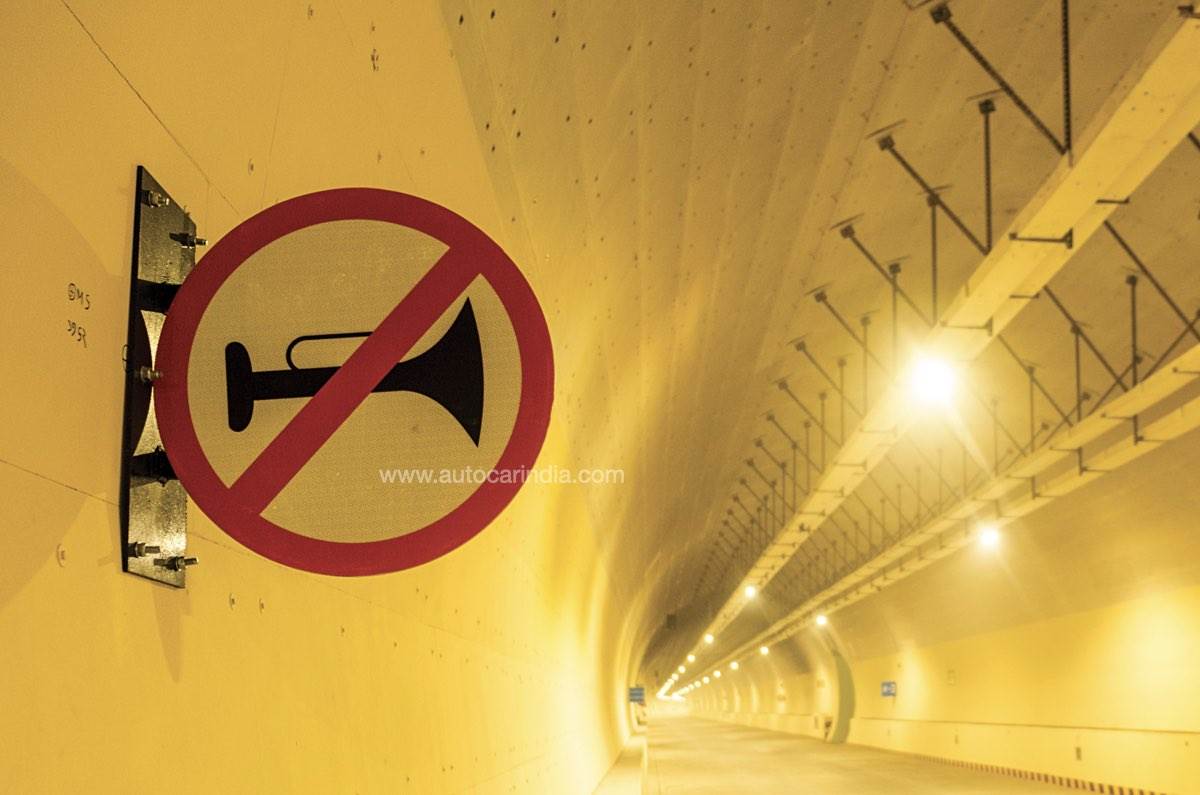
The headiest bit, of course, is the sound. It gets so amplified by the tubular shape of the tunnel that it feels like I’m driving an overdriven electric guitar with the distortion pedal flattened. And can you imagine the wall of sound following the Lambo, and how it dips and rises with every flex of my right foot?
There’s no getting away from it, the bark and angry snarl of the Lambo V10 just has to be one of the all time great exhaust notes.Very different from a V8 or a howling and trumpeting V12, it is angry, urgent and full of midrange sustain. And this tunnel is only making it infinitely louder and better.
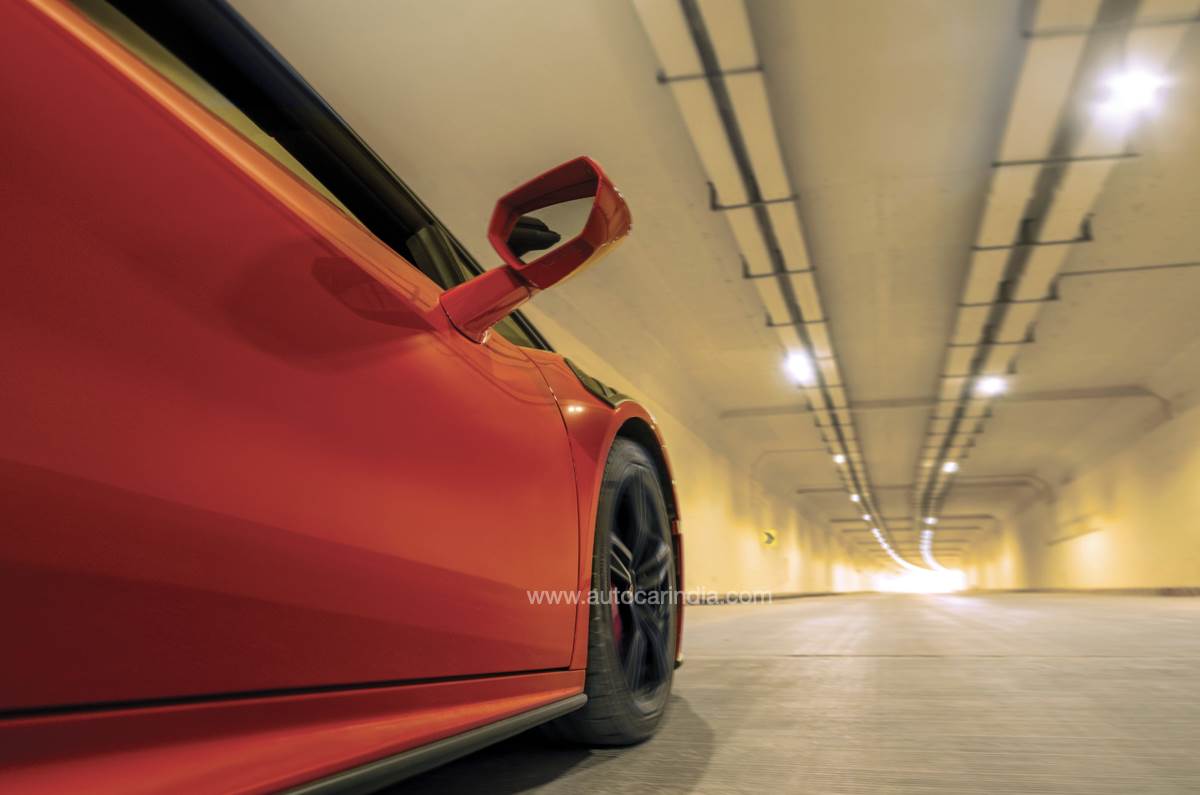
The long straight finally goes down to the lowest point. I only know this because this spot is now familiar to me. At its deepest point, the tunnel is around 20 metres below mean sea level; imagine that. As we begin to climb back up, I get another long and empty stretch on which I can exercise the Huracan, and now I’m even harder on the throttle, the howling exhaust note thick enough to cut with a knife.
Then up in the distance I see what looks like daylight. I glance at my watch; it’s hardly been two minutes. This feels surreal; how I can be in two parts of the city at almost the same time? Apparently I can. Then the circular section, the one cut out by the tunnel boring machine (TBM) runs out, and we are back onto the cut-and-cover rectangular section; the on and off ramp of the tunnel. Time to slow down again as I come up to some construction equipment. We must now be directly below Chowpatty beach and up ahead we rise to meet Marine Drive, right in the heart of the city.
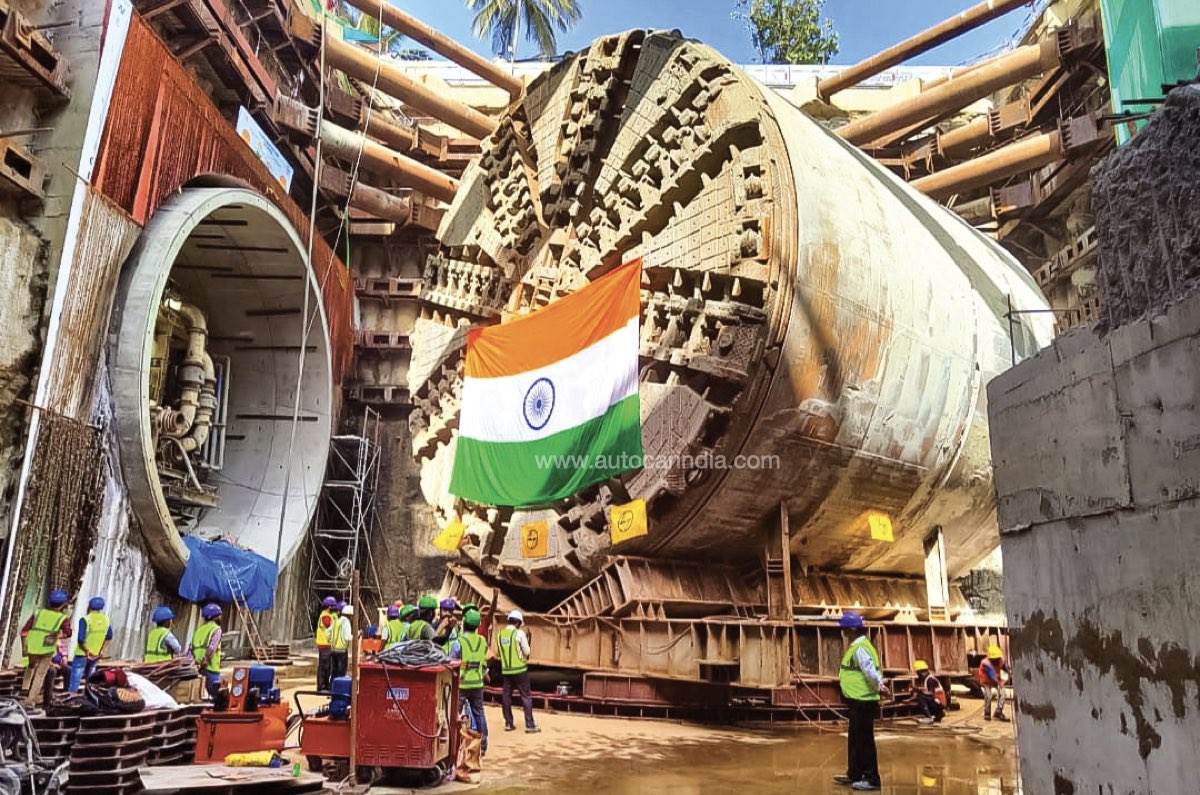
While only one of the twin tunnels has been completed – the southbound one – work on the other is progressing fast. Each 11 metre-wide tunnel will have one emergency, and two regular lanes. There are 11 cross passages for safety between the twin tunnels, and a first for India is the jet engine-like Saccardo system of ventilation. Another India-first are protective fireproof panels made of calcium silicate; in case of a fire, there’s also a water pumping station every 100 metres. A deep sump and high power pumps also help in pushing rainwater back out, should some enter from either end despite the big cross drains and polycarbonate roof.
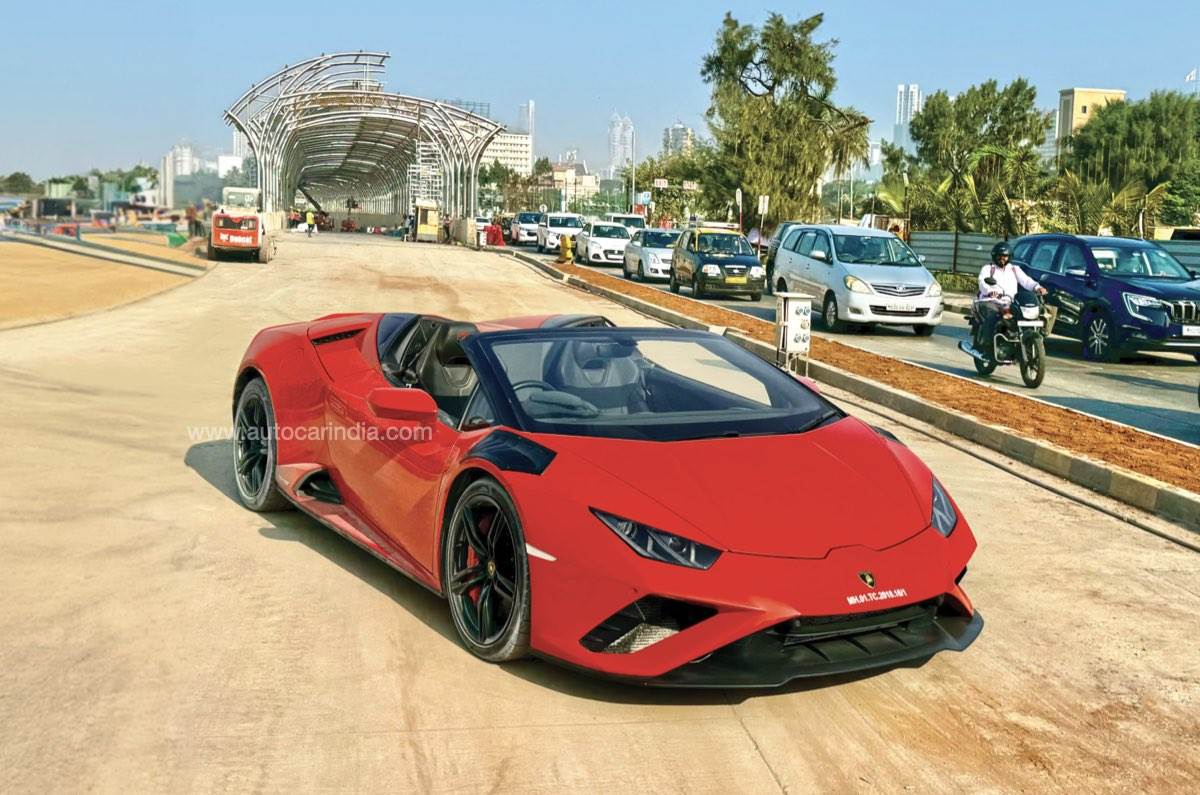
The biggest challenge, however, was preventing the ingestion of sea water while the tunnel was being dug under the sea by the TBM. We asked Dr Cho (see below) and the technique he described to us was fascinating.
Come to think of it, what an ambitious project; through a mountain, under the sea and then back up again. Make sure you drive through the BMC’s engineering marvel the next time you are in town. And imagine what the entire stretch of the coastal road will be like and the massive chunk of time it will save once it is fully open. And that’s even if you are not in a Lamborghini.
Q&A with Dr Namkak Cho, Tunnel expert from M/S Yooshin Engg Korea
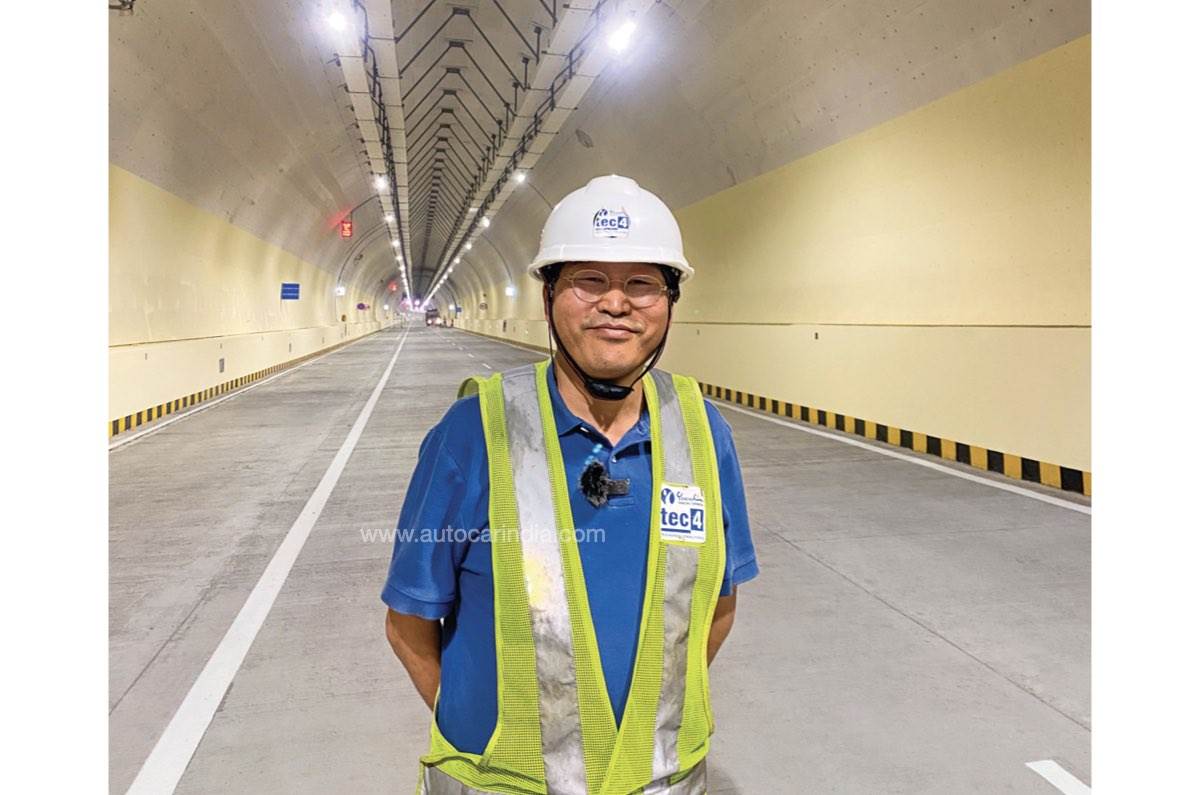
What was the biggest challenge with this project?
Building it under the sea, of course. We had to be careful not to let sea water in. Because once it starts coming into the tunnel while we are digging it with the Tunnel Boring Machine (TBM), there is basically an infinite supply. So what we used is a TBM that excavates in what is called a closed mode. Here, high pressure slurry is used to counter pressurise the sea water that otherwise would have come in, and push it back. Secondly, as we are building the tunnel with segmentary lining, we used cement grouting to fill the gaps in the segment under pressure. On top of this we have installed water tight gaskets over each segment.
This tunnel also used a new age ventilation system.
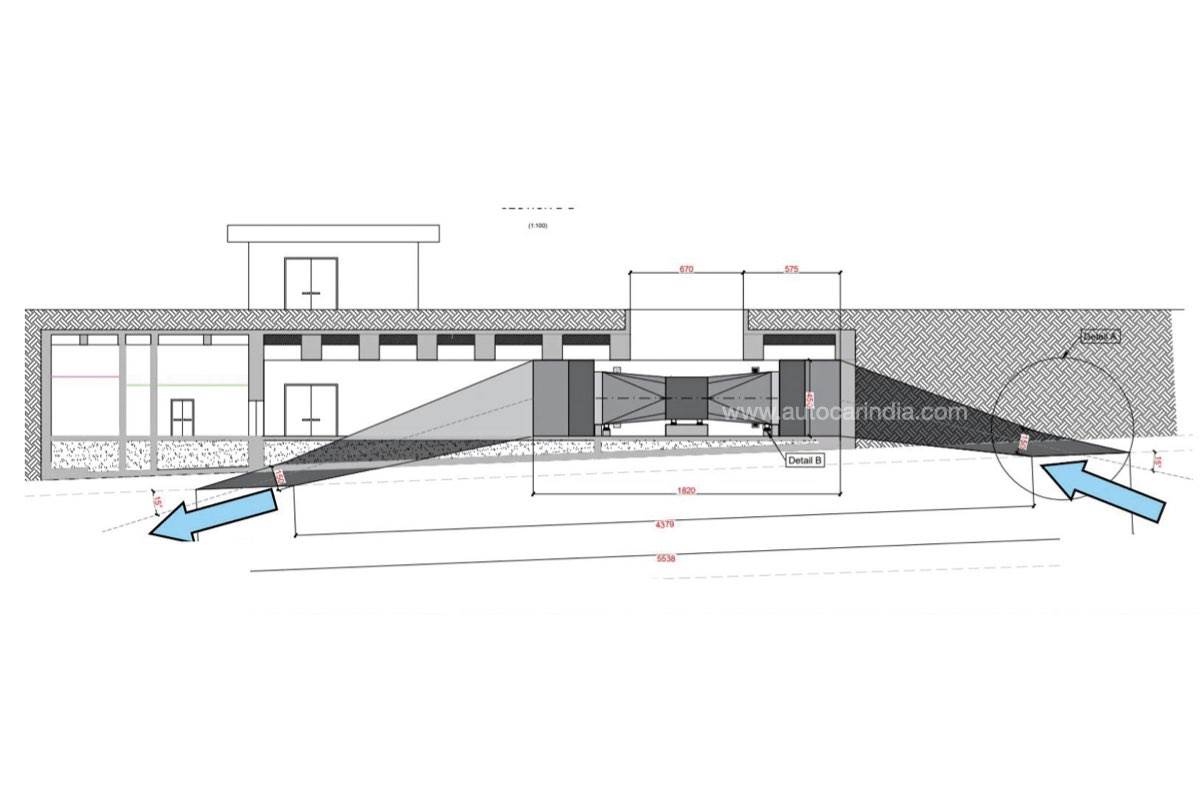
The Saccardo ventilation system used here for the first time works like a jet engine. It has pairs of inlet and injection nozzles at both ends of the tunnel from where pressurised air is pushed into the tubular tunnel. Suction via a similar system takes place at the other end. This allows for a good flow of air, which, in case of a fire, can be actively used to push the smoke out. The flow of air can also be reversed if needed.
How is the tunnel safeguarded from flooding?
When it comes to ingress of rain water, the basic principle is that water should not get into the tunnel. This is the reason both sides are covered with a polycarbonate roofing. Any large volume of water that tries to get in via the road surface is also stopped by the large cross drains that are located at both sides. However, if some water does get in, we have large ‘V’ shaped drains that run along the sides of the length of the tunnel that drain into a massive sump at the centre. Should water get in anyway, there are several large capacity pumps that help drain the build up.
Also see:
Howling through the Mumbai Coastal Road Tunnel in a Lamborghini Huracan Video
Driving on Mumbai Trans Harbour Link video



